I have a dataframe contains PM10 concentration in air over seoul(capital city) in Korea. Please, take a look. I want to plot semivariogram from this data set. As LAT/LON data here, is in degree so I have project this data. I have projected data in this way:
library(rgdal)
seoul3112 <- read.csv("seoul3112.csv", row.name=1)
seoul3112 <- na.omit(seoul3112)
coordinates(seoul3112) <- ~LON+LAT
proj4string(seoul3112) <- "+proj=longlat +datum=WGS84"
seoul3112
after projecting I got seoul311 as like below
coordinates PM10
1 (126.976, 37.56464) 42
2 (127.005, 37.57203) 37
3 (127.0051, 37.54031) 46
4 (127.0957, 37.54464) 47
5 (127.0411, 37.54311) 46
Q1: I found that after projecting, the value of LON/LAT show the nearly same value as previous data frame. My question is whats the actual function of this proj4string(seoul311) = "+proj=longlat +datum=WGS84" command. Here, LON/LAT(degree) is transferred to km/m or something like that?
I tried to write another code using rgdal package like below:
proj4string(seoul3112) <- "+proj=longlat +datum=WGS84"
seoul3112 <- spTransform(seoul3112,
CRS("+proj=utm +north +zone=52 +datum=WGS84"))
seoul3112
after projecting I got seoul3112 as like below
coordinates ID time PM10
12 (321241, 4159438) 111121 2012030112 68
173 (323824.6, 4160203) 111123 2012030112 64
334 (323754.6, 4156684) 111131 2012030112 67
495 (331771.9, 4156998) 111141 2012030112 65
656 (326946.2, 4156927) 111142 2012030112 69
Q2. Here I can see the LON/LAT value transformed to some large value! whats the meaning of these value? m/km or something like that? in above code north means what? northern hemisphere?
Q3. As I mentioned earlier, I want to plot semivarigram over seoul in Korea (utm zone 52). So, which projection rule I should use? Should I consider utm zone? when should I consider utm zone?
I have many confusion about projecting the data. could you please answer my three question in details?
